The Maker The Charles Causley Literary Blog
‘A Vision of Home’ Part 1: Visit to Cyprus Well by Chloé Eathorne
I discovered the Charles Causley poem ‘Eden Rock’, which deeply resonated with me, a poem
that encapsulates such a feeling of gentle peace, simple hope, joy, and eternal love. His candid
and stripped-back vision of an afterlife featuring his young parents in full health and their dog
running at his father’s feet, with just a river separating them touched me. As an only child
growing up in Cornwall, I had shared similar visions of this simplistic idea of the afterlife; being in
a field, running around the long green grass alongside my parents and dogs, and this opened the
door to exploring the wonderful work of Charles Causley. When I shared this poem with others, I
was surprised to learn not many people I knew growing up in west Cornwall had heard of his
work, and this inspired my current project, ‘A Vision of Home’.
As part of my final year studies at Falmouth University, ‘A Vision of Home’ is a collection of
poetry and illustration, inspired by the life and work of Charles Causley and of my experience
staying at Cyprus Well and exploring the historic town of Launceston.
As a community radio presenter for Source FM, I will document this project through a podcast,
including interviews with previous writers in residence and speaking with Nicola Nuttall, Director
of The Charles Causley Trust, to spread the word about the fantastic work of the Trust and its
mission of keeping the legacy of Charles Causley alive.
Setting off from the west of Cornwall, I arrived in Launceston after a scenic journey by both train
and bus, drinking in the views of palleted green fields and steep woodland banks.
After arriving on an unseasonably bright November afternoon, I was struck by the beauty of the
place, the hills below, and the rivers and streams, which inspired me to write a poem about the
journey there.

I was greeted by the stone ghosts of historic castle walls at the top of Angel Hill. It was my first
time exploring Launceston. I had watched video tours of the town in preparation for my visit and
researched the town’s rich history, but it wasn’t a patch on the real-life beauty of the place. It
felt like colouring in the lines of a picture, bringing each segment to life as I discovered the area I
had read so much about through Causley’s work.
I was most excited to stay at Cyprus Well, the home of Charles and his mother Laura, for many
years. This was my first time staying in a poet’s home and having the unique experience of
gaining a real insight into his life, and the place he loved so deeply.
Arriving at Ridgegrove Hill, I located Cyprus Well, tucked away like a starling nestled in the
autumn hillside. Upon entering I was struck by how unchanged and poetic the house was.
Stepping into the darkened living room filled with intricate objects, portraits, and vintage rugs, I
found myself immersed in a time capsule, one filled with quiet beauty. Sentimental ornaments
filled the shelves, each with their own vibrant story. The space felt rich with history and life; you
could easily picture Charles coming through the front door, placing his walking stick in the porch
entrance, and settling down in the armchair with a book.

Across a short passage, his writing room sat, filled with various books, fiction and non-fiction,
poetic and classics, and his red-wood piano. His writing desk was equipped with his first-ever
typewriter (which he gifted to a student he taught at school but was re-gifted to the trust). It was
an inspiring and daunting space. I sketched some interesting objects to include visuals for my
poetry collection.
In the bright lemon-yellow kitchen, I listened to the CDs of Jim Causley (a distant relative of
Charles) who recorded an album inspired by Causley’s poetry back in 2013. Hearing the words
married with music echoing through the house was truly beautiful. The bedrooms were filled
with many details, from the wicker chairs with intricately floral embroidered cushions to the
miniature paintings figurines, and seashells. The place was filled with a deep serenity and peace.
Using Charles Causley’s Map around Launceston as a guide, which he devised with Richard
Graham in 2003, I headed out to explore the town whilst there was still a snippet of November
afternoon light left.

First heading to St Mary Magdalene’s Church, with its stunning intricately carved granite blocks,
and effigy of Mary. I had a go at throwing a stone over my shoulder to land it on her back,
A Launceston tradition that Charles recalls in his poem ‘Mary, Mary Magdalene’.
‘Well, that has to be worth a go! . . . Luckily Mary’s face is very worn by time and weather so I
can’t really see her expression. I wonder what she thinks about having pebbles lobbed at her by
a grown woman?! Sorry Mary!’
I then headed to Launceston castle, which unfortunately was closed for the winter, but a
beautiful and eerie sight in the evening. It was quiet except for a few cats wandering about the
town, including a black cat by the castle! I had researched the locations before visiting and knew
about the history of the castle, which was fascinating, and also quite sad.

I visited ‘Eagle House Hotel’ which Causley had written about in his poem ‘Eagle One, Eagle Two’.
then headed towards St Thomas Church, the resting place of Causley and his mother Laura. His
birthplace just a few meters away, marked with a blue plaque, is situated alongside the River
Kensey. The black water in the evening reflected the streetlights like a thousand little fishes
dancing. I entered St Thomas Church and saw yet another cat, this one white, which darted out
like a ghost between the gravestones. I searched for his grave and paid my respects. I felt quite
emotional, having researched Causley’s life, his experiences, and his work, having the
opportunity to read his diaries at the Special Collection’s Archives which were donated to The
University of Exeter. I sat down on a bench and wrote, watching the evening chimney smoke rise,
and then headed back to the house.

The following morning, I woke to the sound of birdsong and recorded sound bites to include in
the podcast to attempt to capture the essence of my stay. Church bells began ringing and I
recorded these sounds too, alongside the sound of his typewriter, his piano, and the rushing
water of the River Kensey and the many ducks as I headed back to St Thomas Church that
morning. A kind lady unlocked the church, as I had hoped to visit inside the building to locate
what Charles Causley referred to as ‘his pew’ that he often shared with his mother when he
attended church, situated at the back, just in front of the font in which he was baptised.
I was excited to find it and searched for any inscriptions on the pew. Then, after feeding some
hungry ducks and pigeons by the river, I headed back to the town and revisited locations from
yesterday. Seeing them in the daylight gave them new dimensions. I came back to the house and
explored the garden, small and kept, though Causley himself stated he was no gardener! There
was a pamphlet written by J.S. Hurst that features plants Causley had written about in his poetry
and have since been planted in his garden, which I thought was a lovely tribute.
On the final afternoon, I sat down in his armchair in the study, and although there were so many
books, one in particular stuck out to me. It was a copy of ‘Dusk and Dawn’ a poetry anthology
compiled by Charles Causley. As I read the introduction, it felt like I was receiving a message
from the late poet. Causley wrote- ‘if the poet needs one special gift in addition to his own
talents I’d say, as with all creative artists, that it is courage.’ This line resonated with me deeply
as a young Cornish poet, and I left Cyprus Well feeling with a great sense that I had learned a lot
during my stay, which will stay with me for life.

Written by Chloé Eathorne.
Photography credit to Chloé Eathorne.








